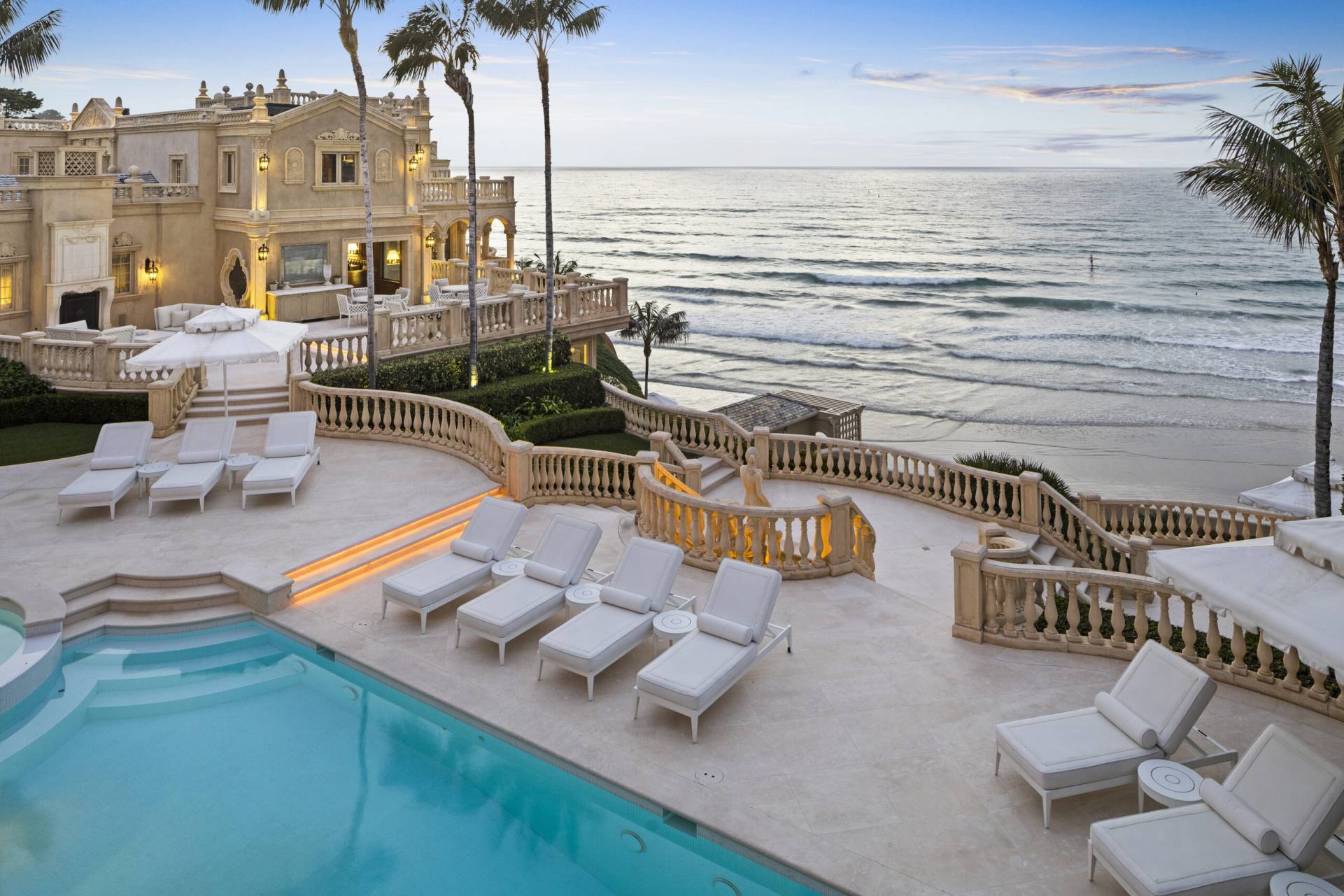Golf has always been considered an elitist sport, but when precious metals and exotic leathers are introduced, it’s a whole new game.
With its expensive equipment and country club heritage, golf has always been considered a luxury pursuit, even though aggressive youth programs and some hip touring professionals have begun eroding the sport’s buttoned-down image. Nonetheless, players with unlimited resources or a penchant for fantasy are fueling demand for some over-the-top golf equipment and accessories.
The venerable luxury brand of Tiffany & Co. creates some of golf’s most coveted trophies, including those of the PGA Championship and Arnold Palmer Invitational. It also produces an elegant sterling silver putter ($2,500), which is an ideal gift for any golfing enthusiast who likes to flash some bling on the greens. A more discreet way to glamorously accessorize one’s game is with the company’s sterling silver tee, which at $175 is a relatively inexpensive way to give a loved one a little blue box from Tiffany. Hopefully, it will not be lost on the course!
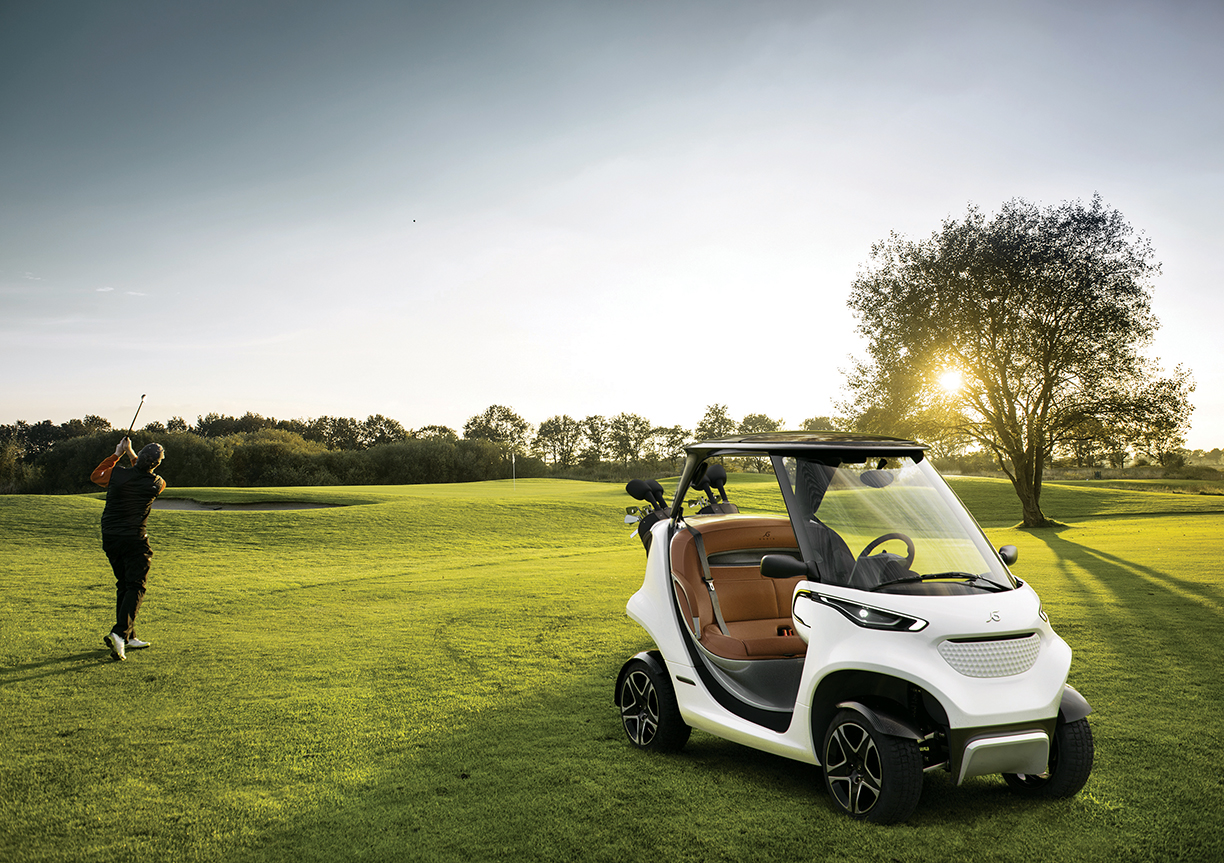
The Garia “Golf Car”
Photo courtesy The Watch Judge

The most expensive regular-production golf clubs are the platinum-and-24-karat gold-accented Beres 5-Star series from Japanese manufacturer Honma. Veteran golf retailer Bill Stauff er of Las Vegas Golf & Tennis Superstore reports that a 14-club set with bag sells for about $65,000 and is popular with status-conscious Asian tourists who would pay more for these products back home. “There’s no question the quality is there,” states Stauffer, who insists Honma products are not simply for bragging rights. He explains the clubs are all made-to-order by seasoned craftsmen, which results in an eight-week wait for delivery. While the brand has traditionally been more popular with billionaire duff ers than PGA pros, superstar Justin Rose just inked a 10-year endorsement deal with Honma.
Transforming the clunky electric golf cart into a sophisticated driving machine is Garia, a Danish manufacturer whose top-of-the-line vehicle begins at $73,000. The Garia “Golf Car,” inspired by Mercedes-Benz, combines luxury, state-of-the-art technology and the true spirit of the game. For functionality, it features a scoreboard displayed on a touchscreen and handy tray for balls and tees, while comfort is ensured by the inclusion of that essential amenity on the golf course — a built-in refrigerator. And with an attainable speed of 43 miles per hour, albeit not recommended at stuffier country clubs, Garia has not overlooked performance. This aerodynamic Mercedes Benz-styled ride puts an end to the plastic buggy age and allows luxury golf enthusiasts to express themselves on the links.
Anders Lynge, designer and co-founder of Garia, explains the inspiration for the product was to take Mercedes-Benz design values onto the golf course, noting the iconic automotive brand has previously applied its sense of style to yachts and helicopters. All Garia golf cars are more than just your average golf cart,” insists Lynge, citing features like sports car-inspired double-wishbone suspension with disc brakes and an integrated instrument cluster. While it offers the functionality and simplicity of a golf cart, the designer maintains it drives more like an automobile.
“Buyers are wealthy individuals who need the car for golf and street usage inside their communities or on their properties,” says Lynge, who reports the car is street legal in both the EU and U.S. “Some are Mercedes collectors, some avid golfers who want the very best, others are athletes or entrepreneurs who have made it and now live in a golf community and want the best possible vehicle for driving and golfing,” says Lynge of his globally diverse clientele.
Par West Custom Golf Shoes is another brand that has gained traction among discriminating golfers. Paul Raddatz founded the business after making his first pair of shoes for PGA pro Payne Stewart — the game’s most flamboyant dresser in the ’80s and ’90s — from NFL football leather.
Currently, three of the top 10 ranked players on the Tour are wearing Par West shoes. The Wisconsin-based company custom-makes all shoes from a foot mold kit, taking into consideration clients’ sock preferences and habits on the course.
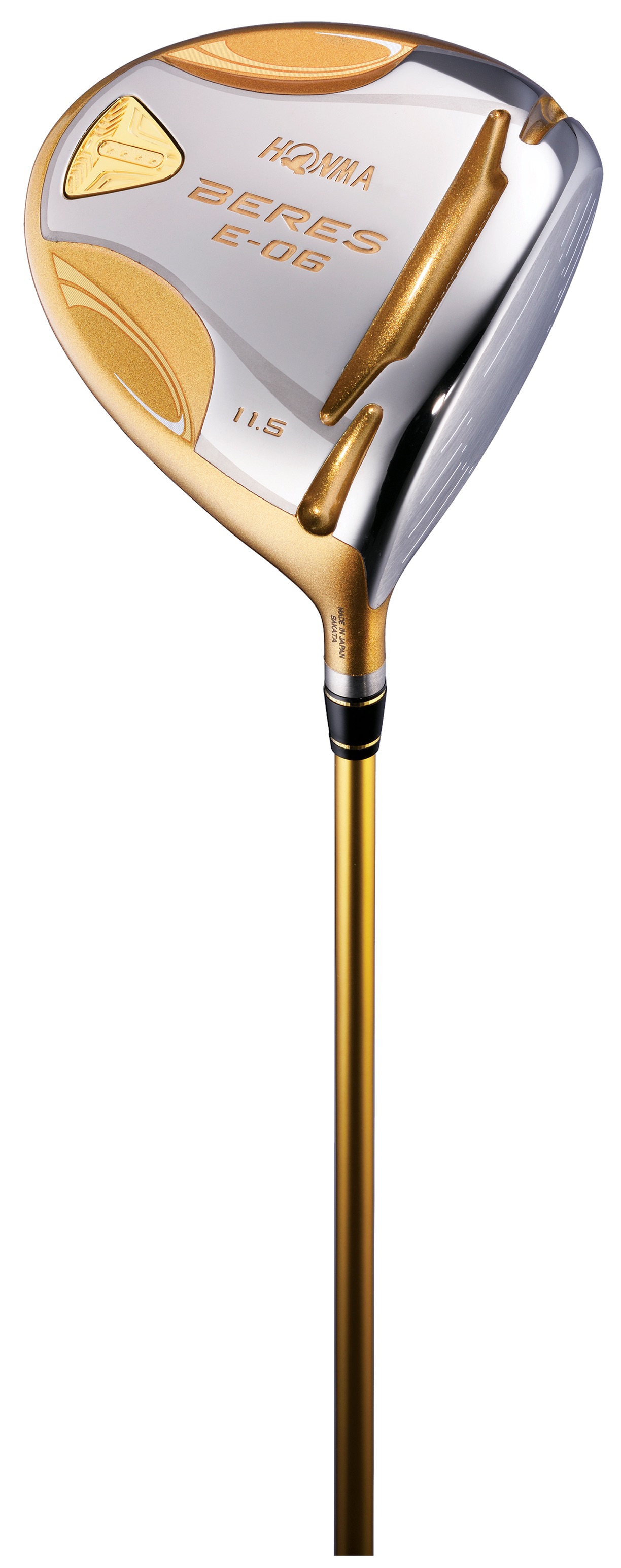
Honma Beres S-06 Driver
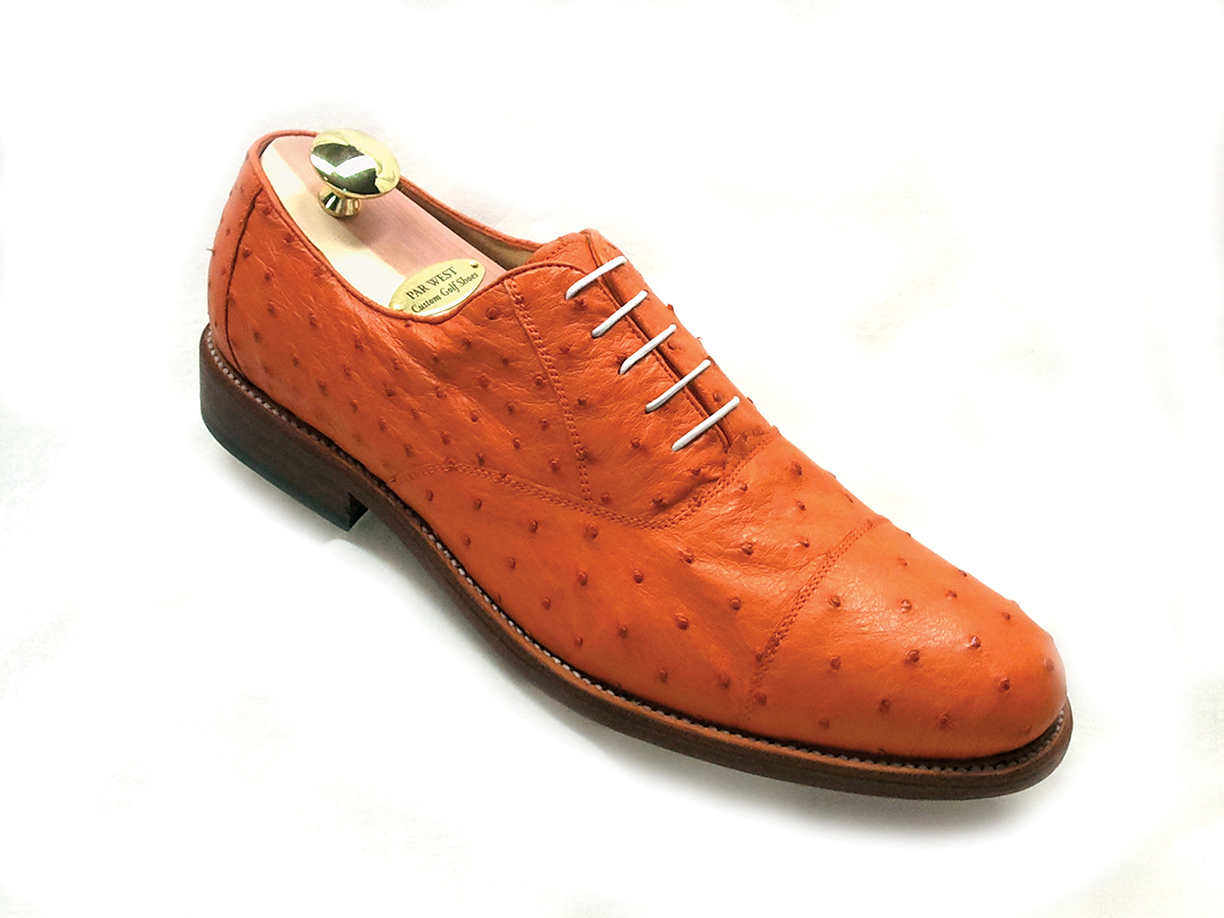
Sterling in Tangerine Ostrich
Reporting he has sold shoes with more than 5,000 distinct color and style combinations, Raddatz says many of his customers are simply unable to find shoes that fit in any pro shop. “Others are people who really want to look their best and care about quality,” he explains. Traditional styles are offered for conservative dressers, but for those more daring in their golf fashion, perhaps influenced by the PGA’s Rickie Fowler, Par West has plenty of eye-popping options to choose from.
Raddatz, a leather industry veteran, utilizes sharkskin, ostrich, American bison, crocodile, African elephant, and stingray for golf shoes, among other exotic leathers. He reports bold color choices like fuchsia, canary yellow or tangerine are surprisingly popular, and a pair of royal purple American alligator shoes is priced at $5,200. An avid golfer himself, Raddatz states, “I don’t care how much you spend on clubs or lessons. Stability on the ground is the basis for a good swing.” A large part of Par West’s business is corporate gifts, ideal for the Fortune 500 executive who fancies himself as the best dressed golfer at his club.
Some fashionable duffers may opt for a vintage Louis Vuitton golf bag, but among the most expensive currently available are ostrich, crocodile or carbon fiber bags from Barchi, handcrafted by Italian artisans. Customers should be prepared to spend more than $40,000 for these luxury bags, available in vibrant colors and accented with palladium hardware.
Considerably more modest but with plenty of cachet is Louis Vuitton’s golf kit clad in the design house’s signature Monogram canvas. The $850 item, which can be clipped to one’s golf bag or Garia cart, neatly holds three balls and four tees. Players with fancy accessories should probably consider membership at a country club that is equally selective, and the most expensive in America is Liberty National Golf Club in New Jersey, where the initiation fee is reportedly $500,000.
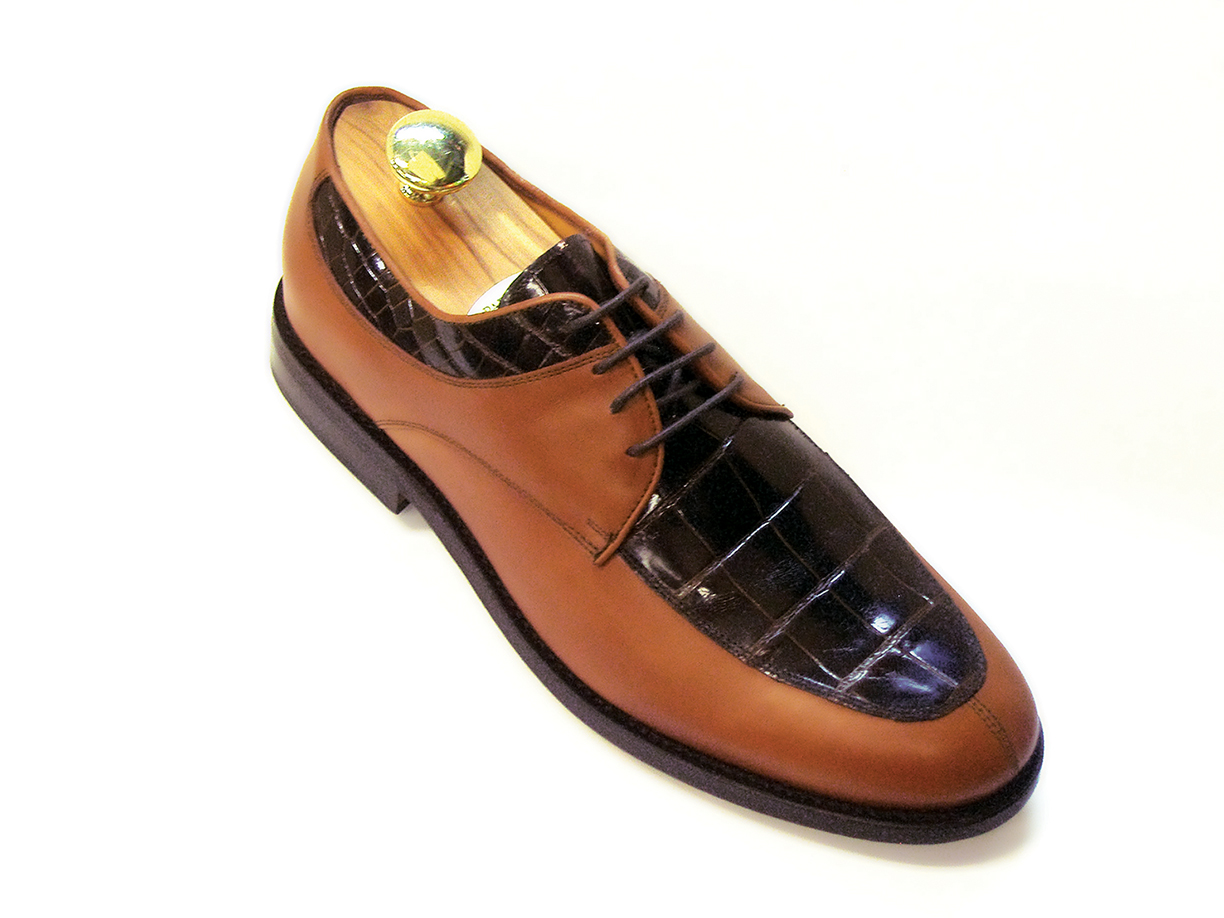
Riviera in Cognac Calf & Chocolate American Alligator
For those looking to travel to Italy this summer, make sure to visit the town of Lecce in the country’s southern Apulia region. Filled with gorgeous cathedrals and historical sites, the city has an “oOld-w World” feel to it — especially now that the Parco delle Mure Urbiche, the city’s ancient walls, have now been restored.
The Italian limestone manufacturing company Pimar recently won first-place for its restoration of Parco delle Mure Urbiche in the city of Lecce during the City Brand & Tourism Landscape Symposium on June 20, 2019.

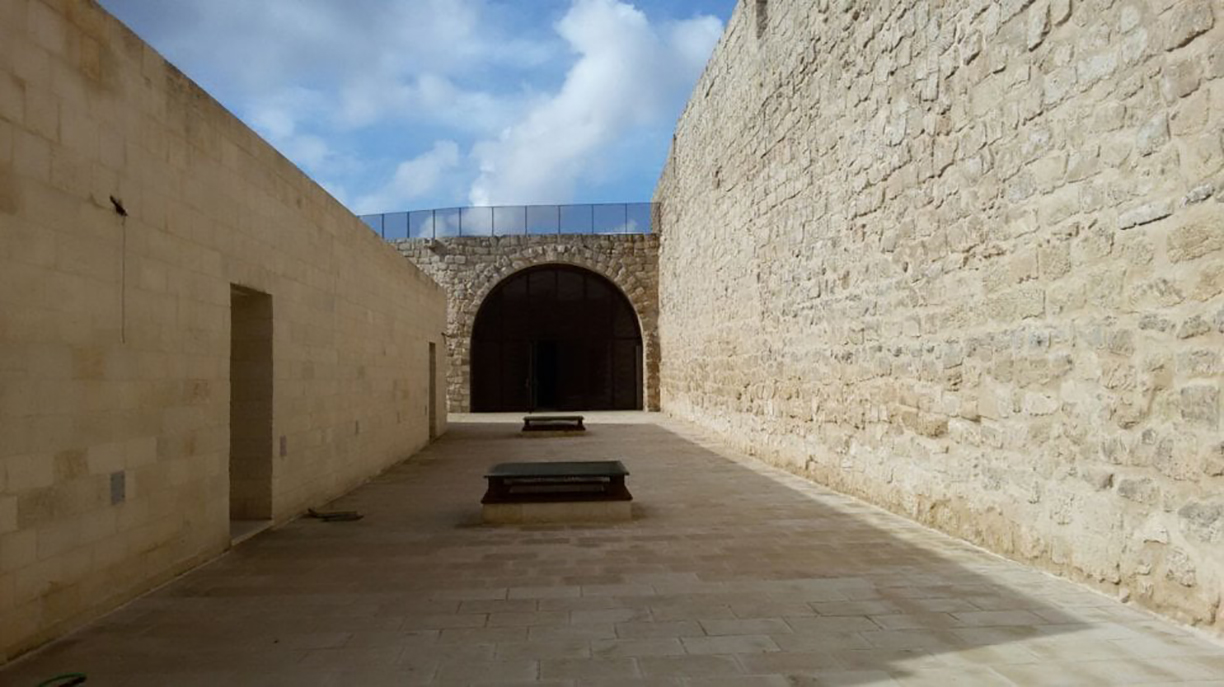
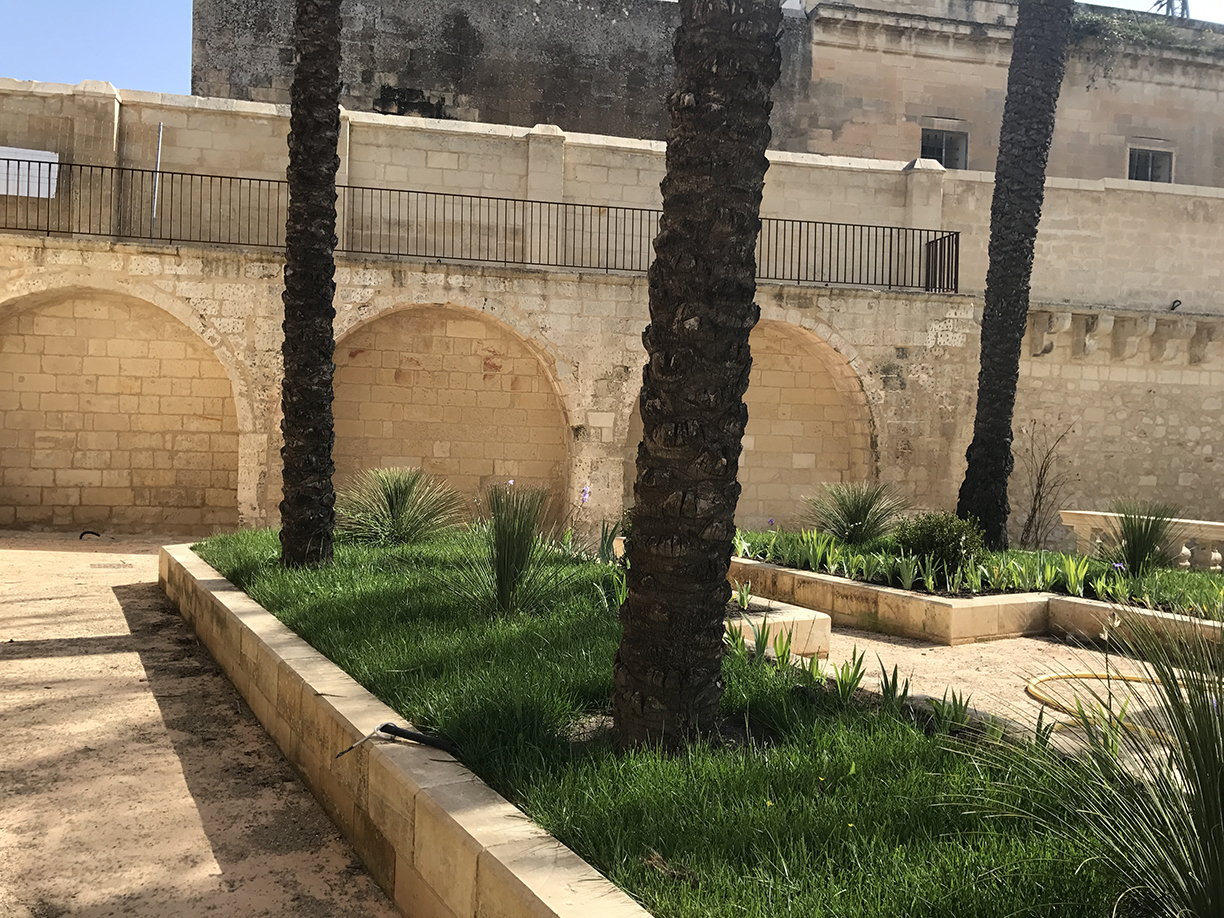
In the restoration of the ancient city walls located in Lecce, Pimar collaborated with architect Patrizia Erroi from the Historic Center Office of the city of Lecce. Both aimed to enhance the value of an archaeological area in a harmonious relationship with the landscape, while making it fully accessible to the public.
The international design recognition is promoted by the National Board of Architects, Planners, Landscape Architects and Conservation Architect and International Magazine PAYSAGE TOPSCAPE, in collaboration with the Milan Triennial, which hosted the inauguration ceremony its Hall of Honour.
Within the framework of the rehabilitation of urban space, Pimar stood out for being a “well thought-out requalification project focusing on the restoration of the historic city walls, which unveiled an unprecedented scenery in Lecce.”
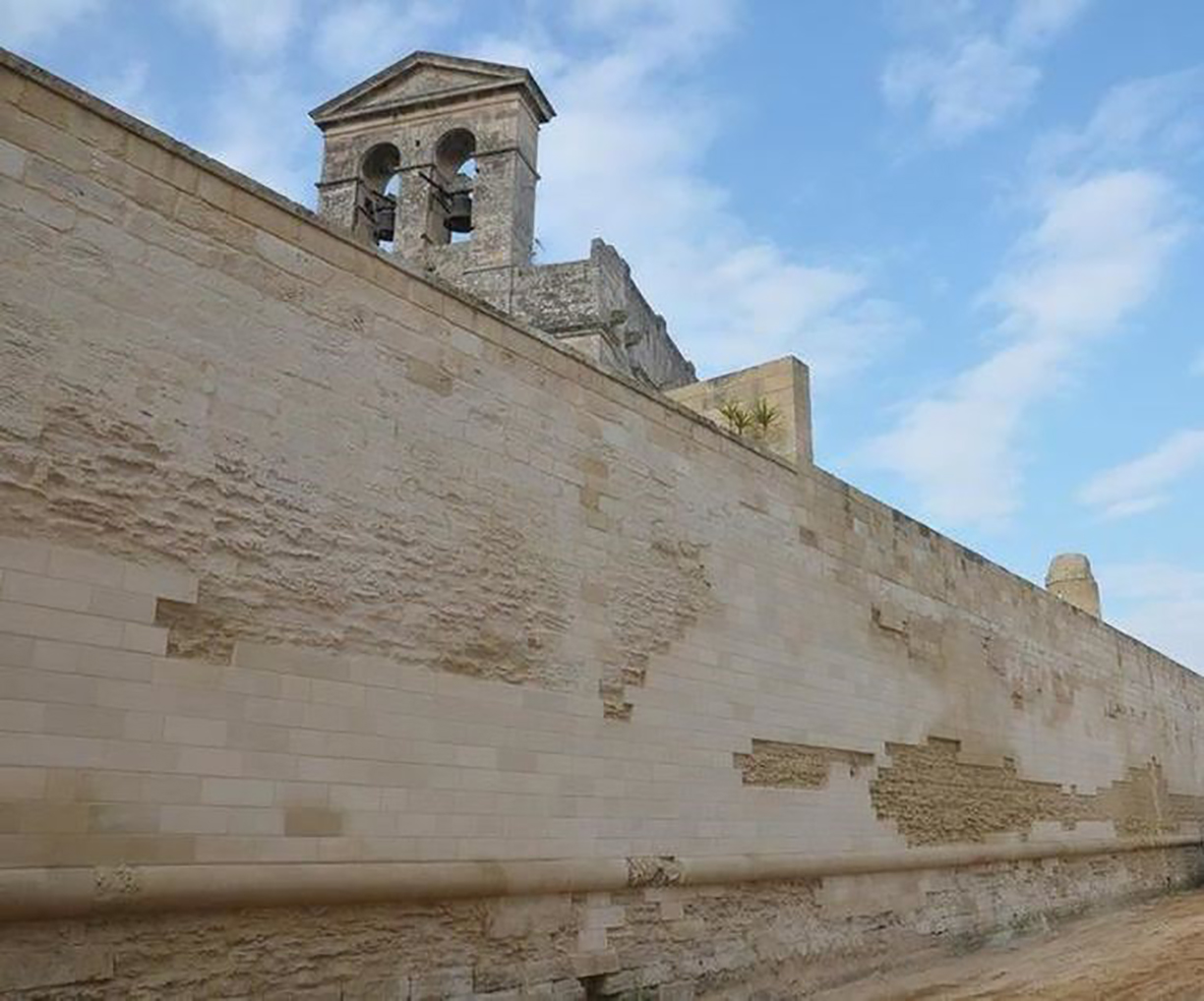
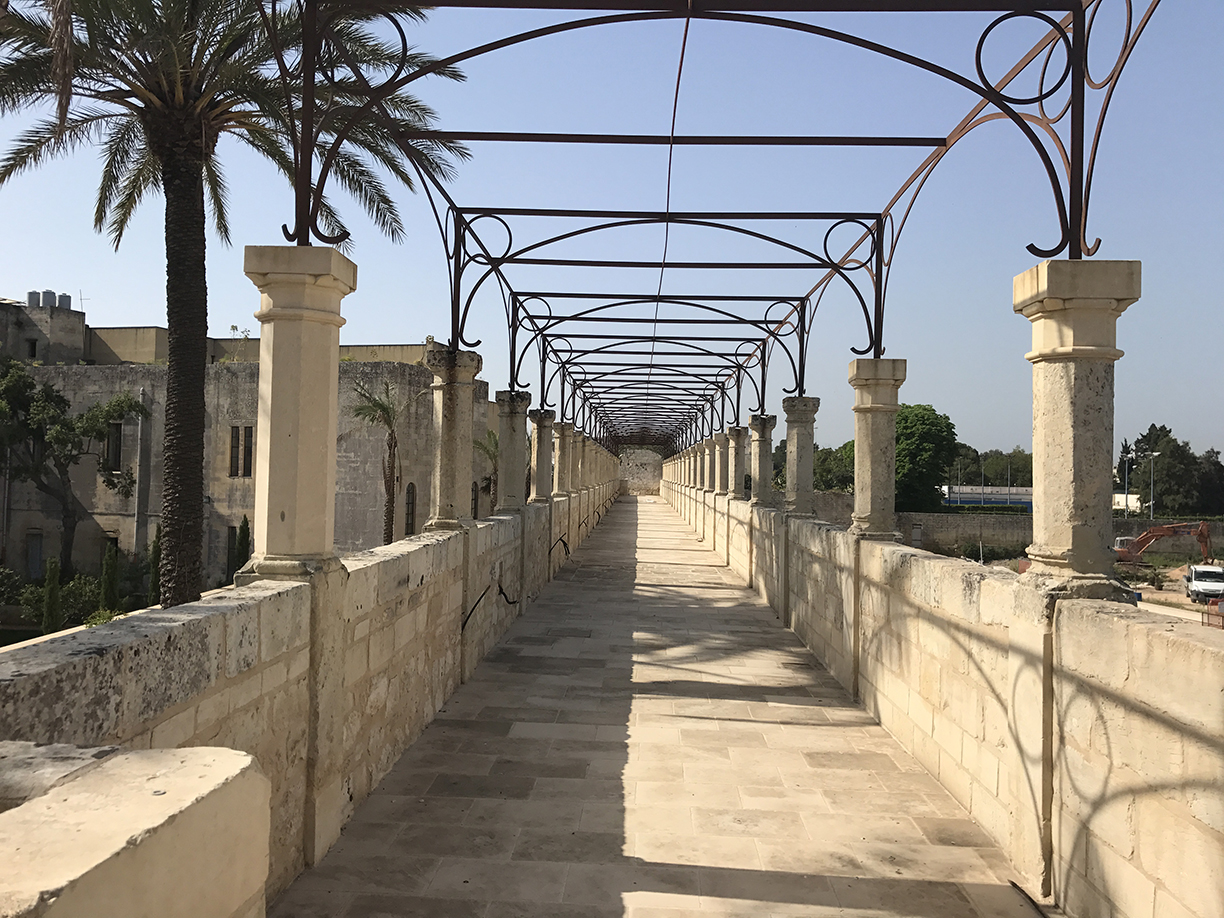
The restoration of the Mura Urbiche made exclusive use of Pimar natural stone. Thanks to the restoration works, the walls are now perceived — together with the moat and the rock outcropping unearthed by the archaeological dig — as a single stone landscape having intrinsic figurative and formal qualities. The restoration work performed on the 16th century fortress also brought to light a Roman road, dating to between the 2nd and the 3rd century BC, which continued to be used until the 16th century.
The detailed and laborious process granted Pimar the first-place award at the symposium. With this recognition, the association reasserted its commitment to the promotion and development of landscape architecture on the occasion of the 100th anniversary of the foundation of the first course of studies in Landscape Architecture.
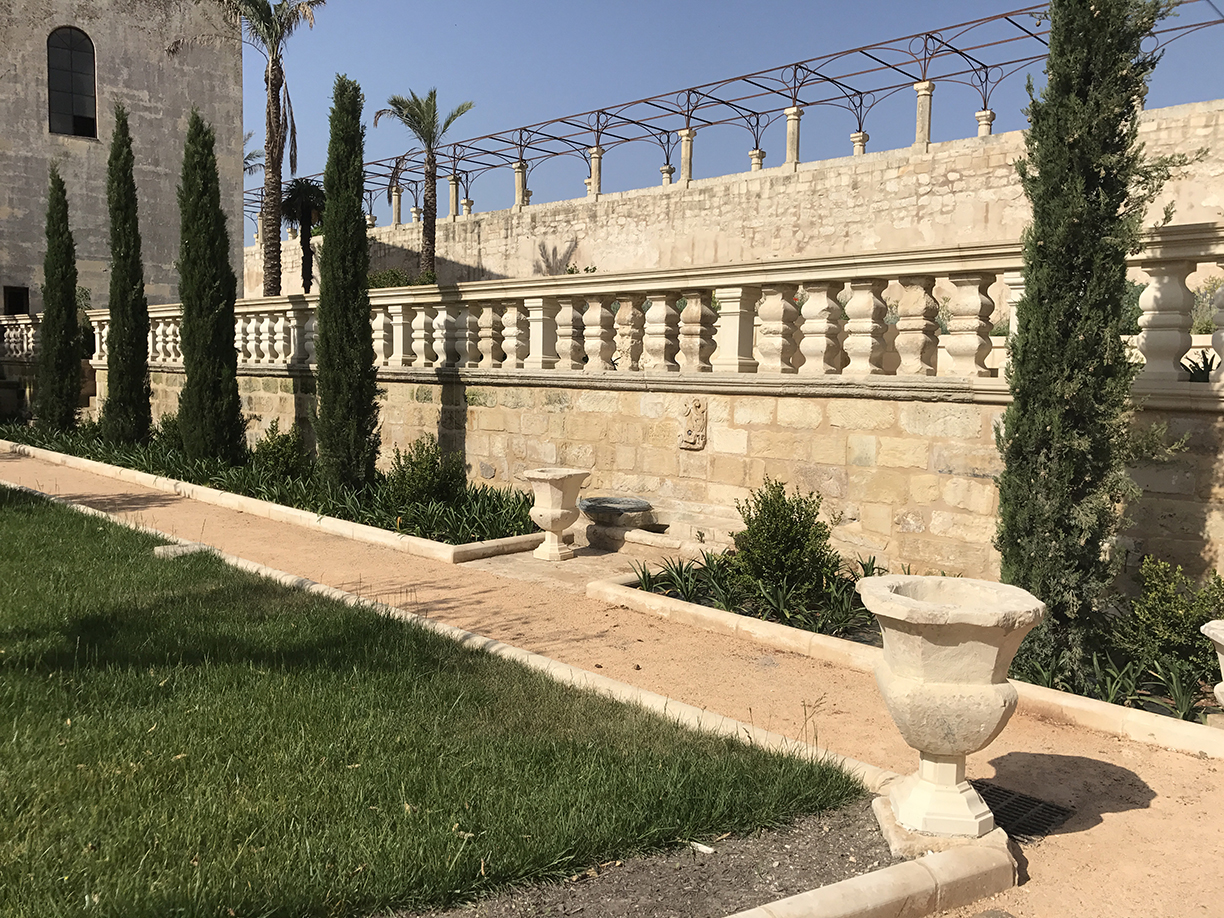
Running completely on electricity, the Mirage Air is elevating the standard of eco-friendly yachts.
For those with a heart for being eco-friendly, renowned yacht builder Frauscher Shipyard has launched a sleek, silent, electric version of its 740 Mirage Air powered by Torqeedo’s Deep Blue 100i.
Owners can cruise silently at 10 km/h for more than 10 hours, appreciating both the natural world and the yacht’s spacious, centre-console layout, distinctive design and extraordinary quality.
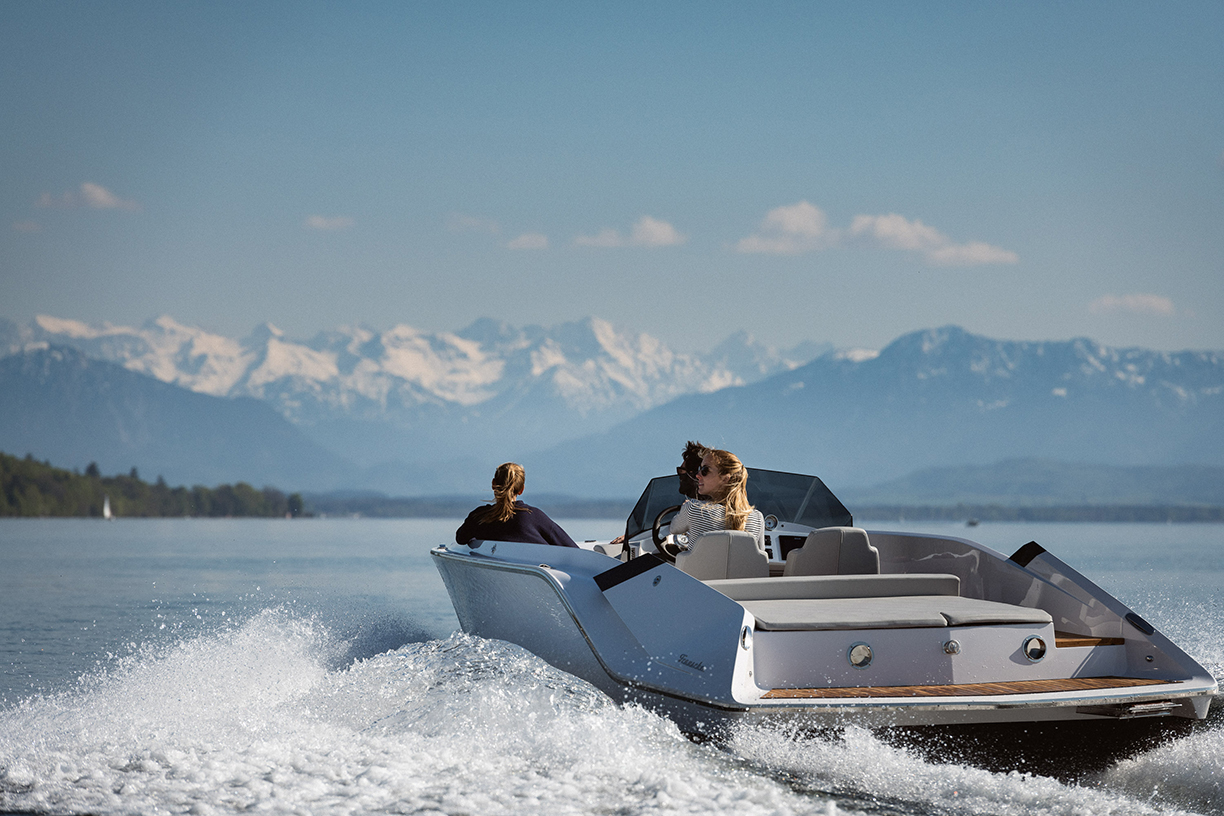
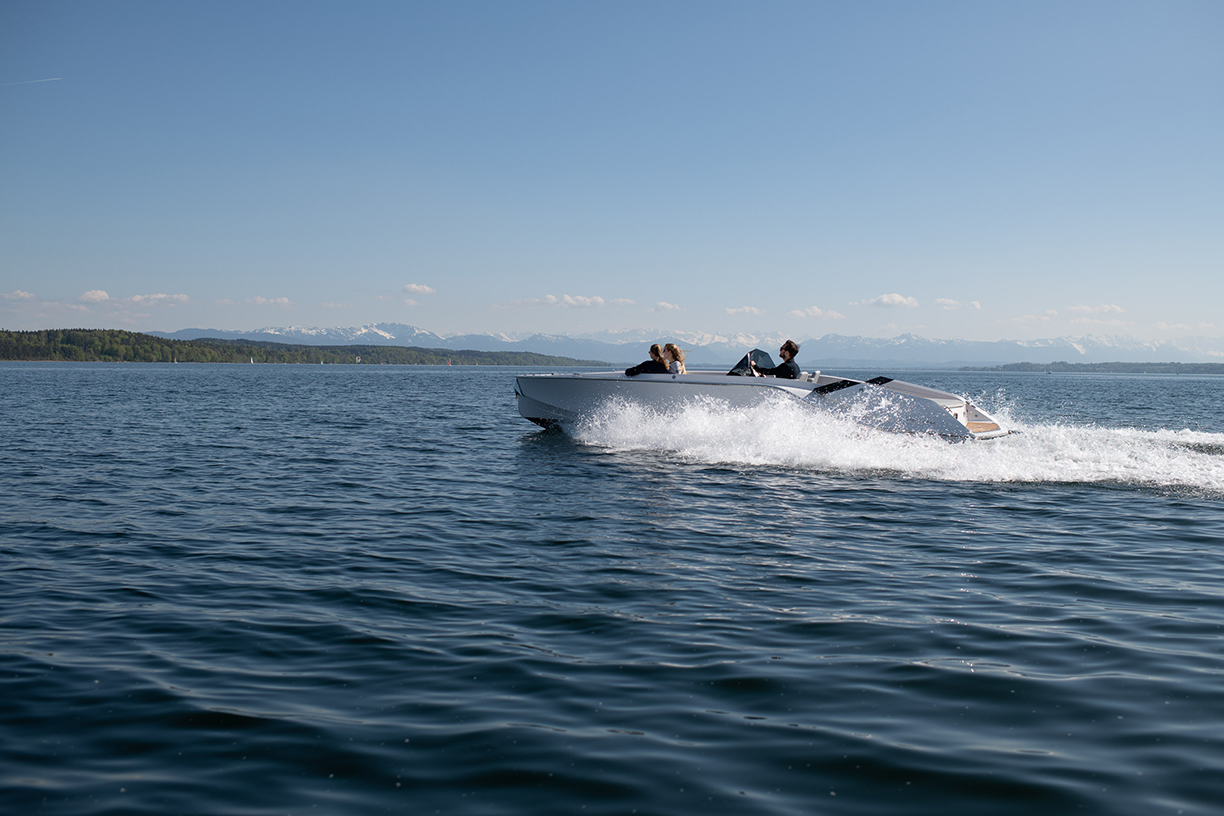
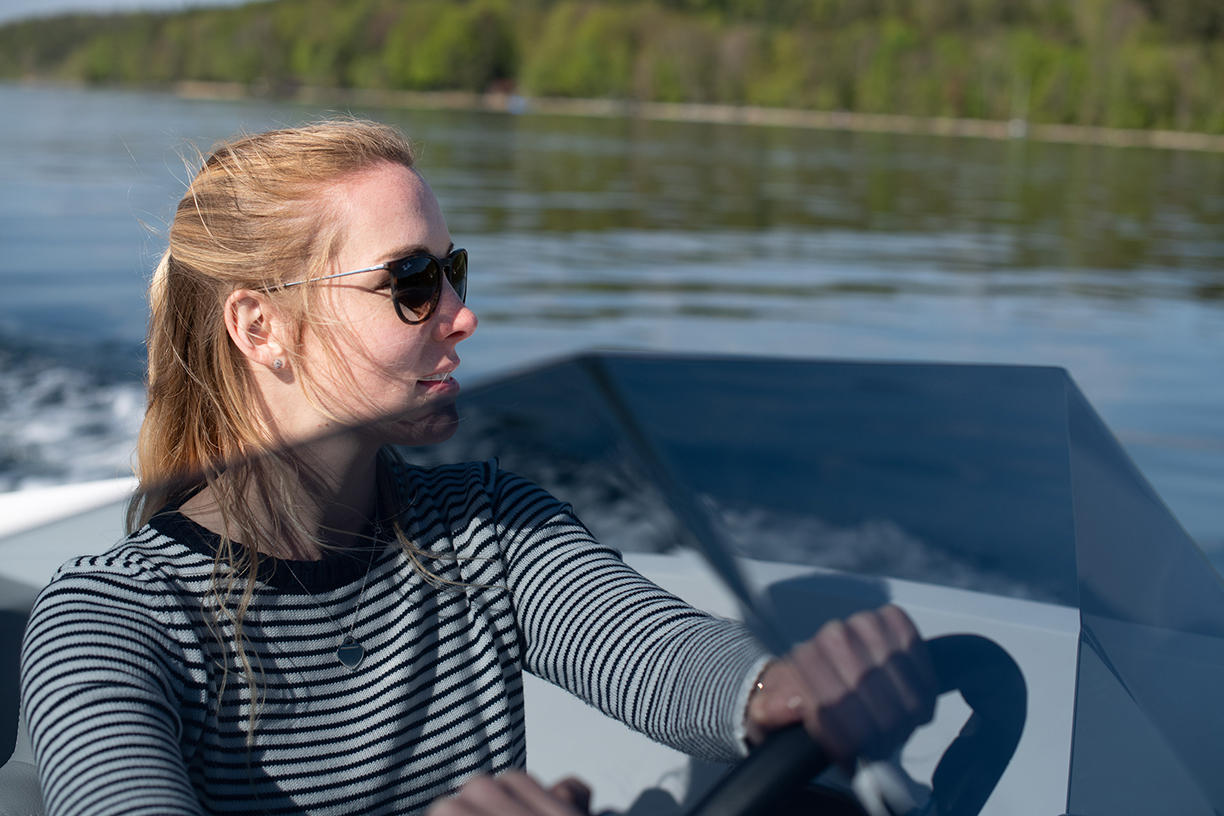
The fully electric 740 Mirage Air further enhances tradition with innovation, high-tech features and eco-friendliness. Installed with a Deep Blue 100 kW electric inboard motor and two lithium batteries with BMW technology (i3-type), the 740 Mirage Air is the ideal day cruiser.
“At Frauscher Shipyard, we see ourselves as ‘Engineers of Emotions,’ and we always want the owners of our boats to have a great time on the water. With the powerful 100 kW drive system, we are entering an entirely new dimension of electric mobility on the water,” says Frauscher Shipyard’s managing partner Stefan Frauscher.
The 7.47-meter yacht was designed by studio KISKA and Thomas Gerzer, alongside hydrodynamic expert Harry Miesbauer. Although the dynamic lines are suggestive of luxury car design, inside you’ll find all the comforts one could desire: a silent, environmentally friendly electric drive, refrigerated compartment, high-tech yet easy-to-use controls and displays, large sunbathing area, electric windlass, and a bow thruster for foolproof docking.
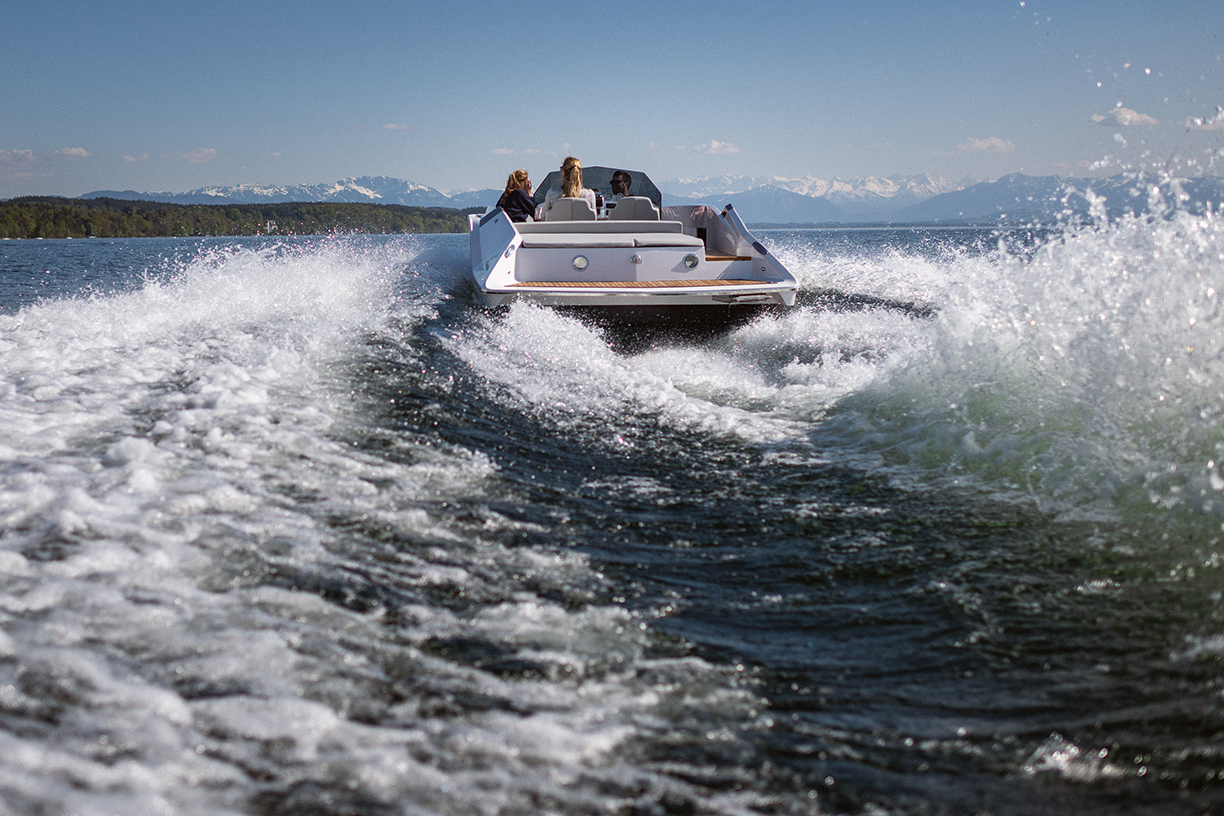
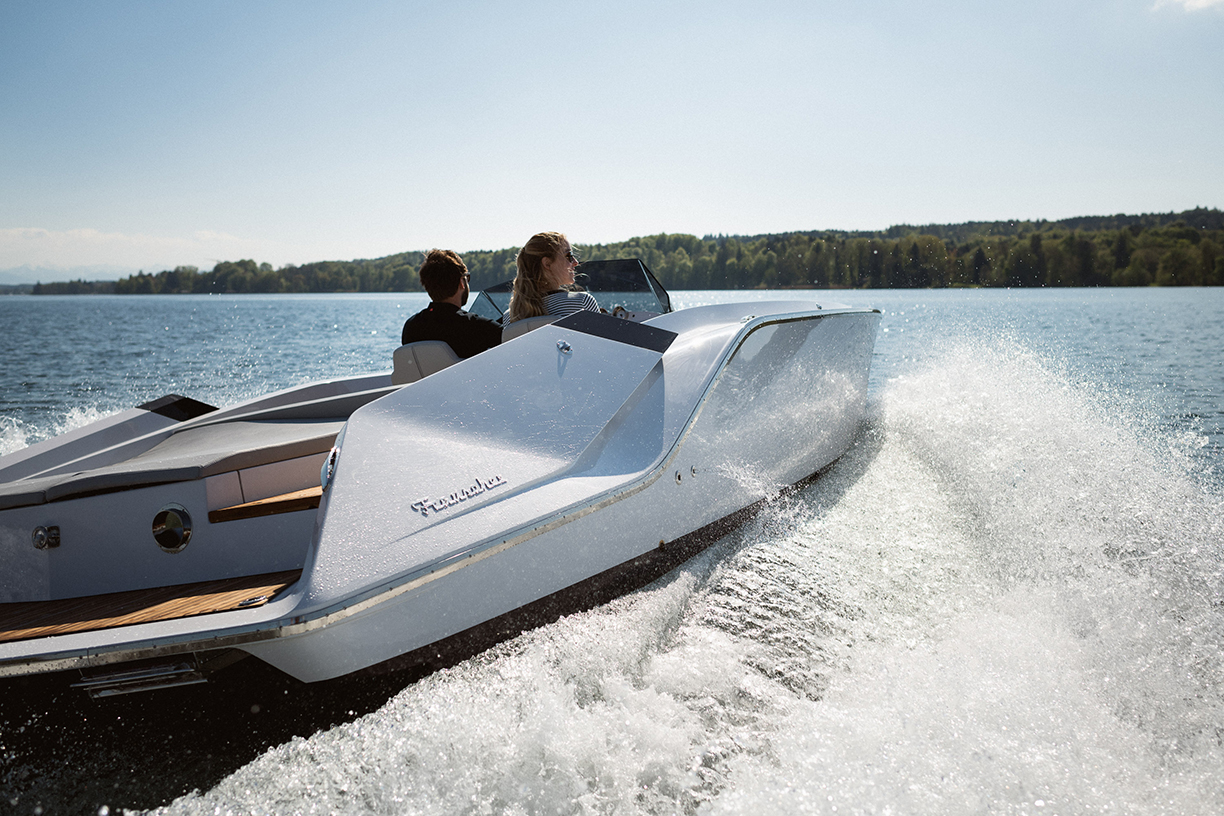
The whisper-quiet engine used in the Frauscher 740 Mirage Air is specifically designed and constructed to power planing motorboats. The system’s reliable and easy-to-maintain design delivers extraordinary performance at its full power range, with up to 2,400 rpm and incredible torque delivered at low rpm.
The 40 kWh Deep Blue batteries installed in the 740 Mirage Air bring the latest in automotive-grade lithium-ion technology from the famed motor works of BMW. The batteries feature industry-leading energy density and a comprehensive safety system. Torqeedo has tailored the characteristics of the Deep Blue battery to make it suitable for the marine environment and is offering up to a nine-year limited battery capacity warranty.
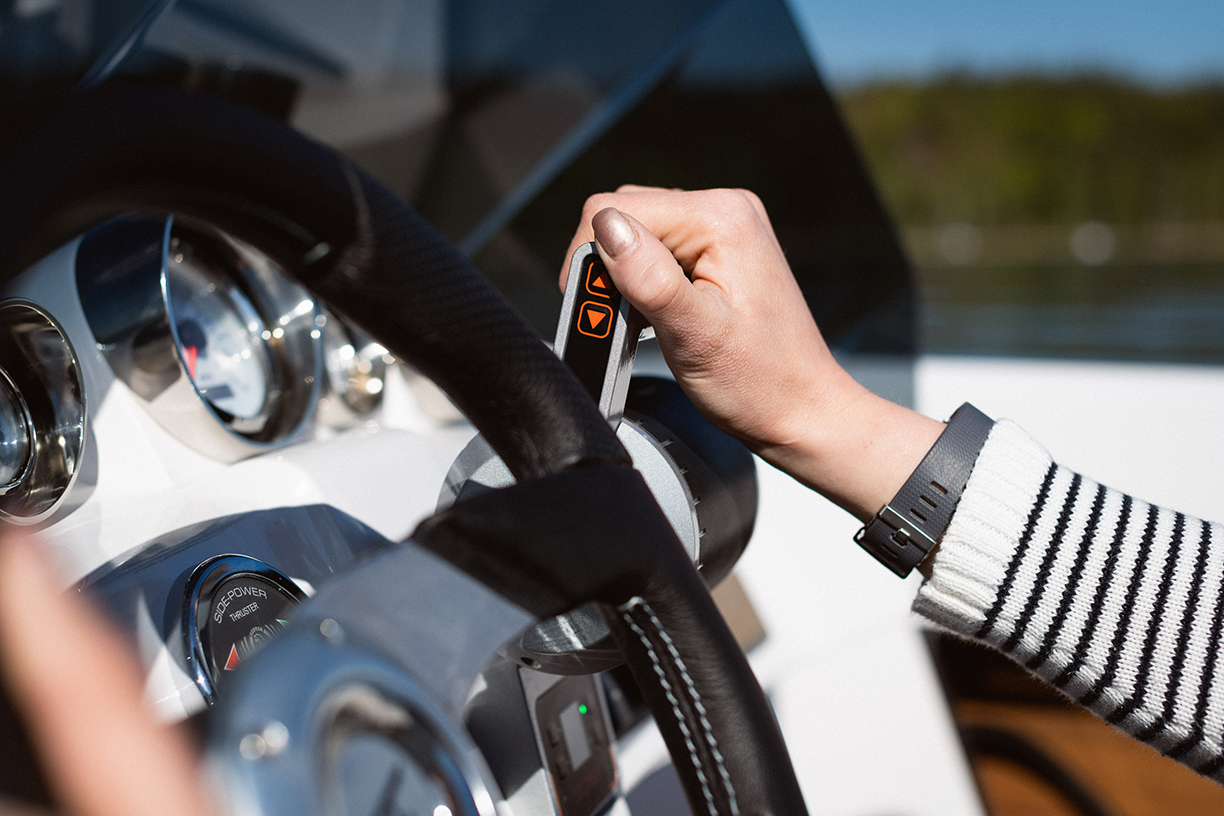

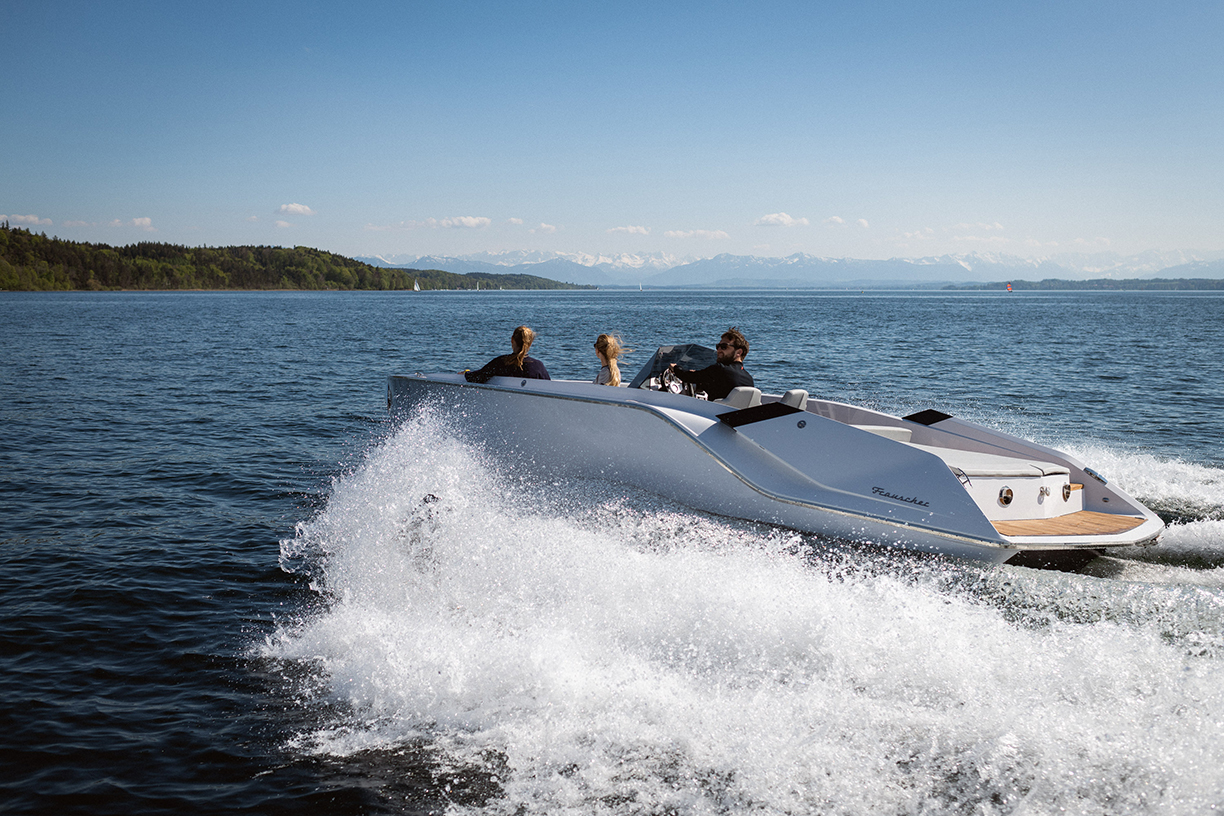
“The Frauscher 740 Mirage Air provides a quiet and powerful luxury yachting experience for boats that operate in sensitive areas and those with a heart for nature,” says Torqeedo CEO Christoph Ballin. “With an industrially engineered, fully integrated electric drive system and the extraordinary craftsmanship of the Frauscher Shipyard, this electric yacht will attract the eye of discerning owners worldwide.”
Photos courtesy of Christian Brecheis
Manhattan’s newest luxury rental building, Summit New York, just unveiled The Summit, its own sky lounge overlooking all of Midtown East.

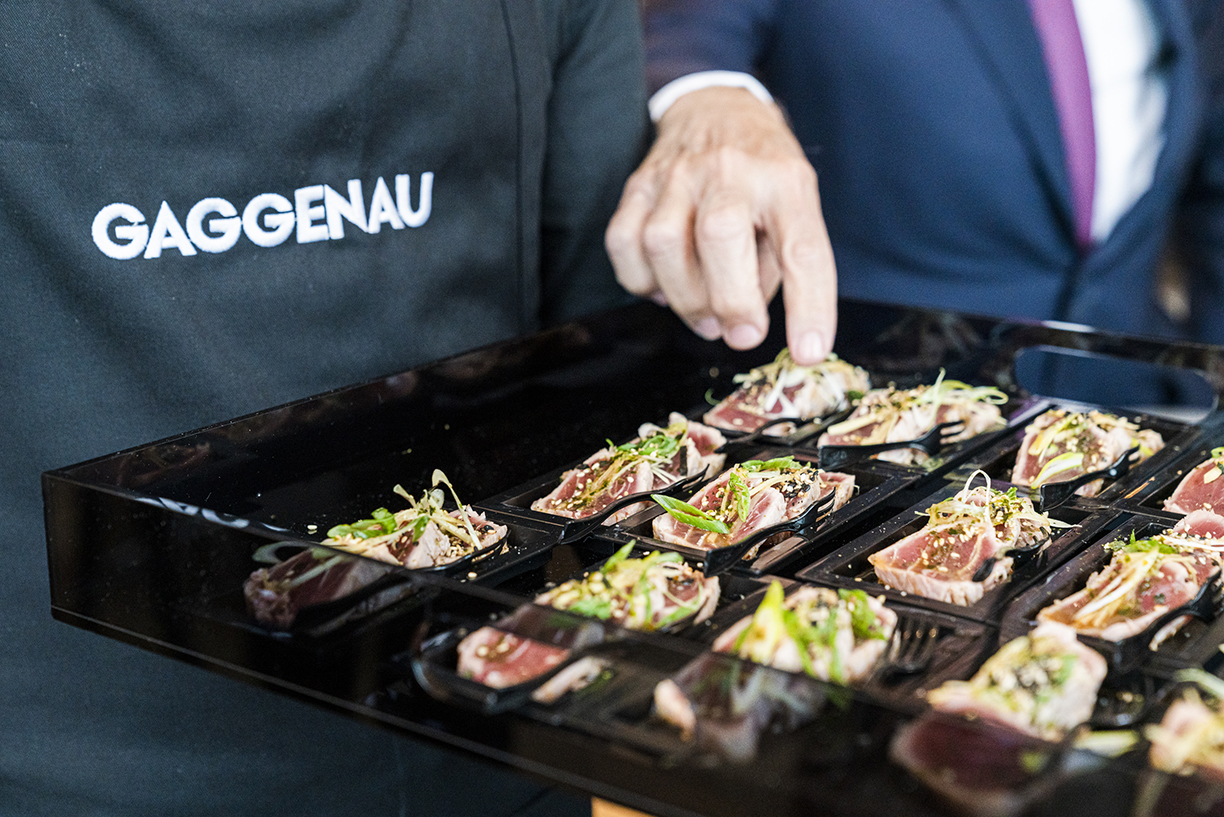

Walk into the luxury residential building and find yourself in a three-story high lobby, greeted by the concierge, doorman and staff.
Take the elevator to the 42nd floor to enjoy the brand new sky lounge, exclusive to Summit residents. The luxury, exclusivity, and sheer height of the sky lounge itself creates a “Live Above It All” atmosphere for residents to enjoy.

At the unveiling held on June 5, attendees enjoyed a private viewing with food and wine specially prepared by the luxury appliance company Gaggenau. Including a marble fireplace and a wine cellar, The Summit was a collaboration between Handel Architects and Escobar Design by Lemay, while being developed by the BLDG Management. Real estate agents and residents alike joined in on the celebration overlooking the city.
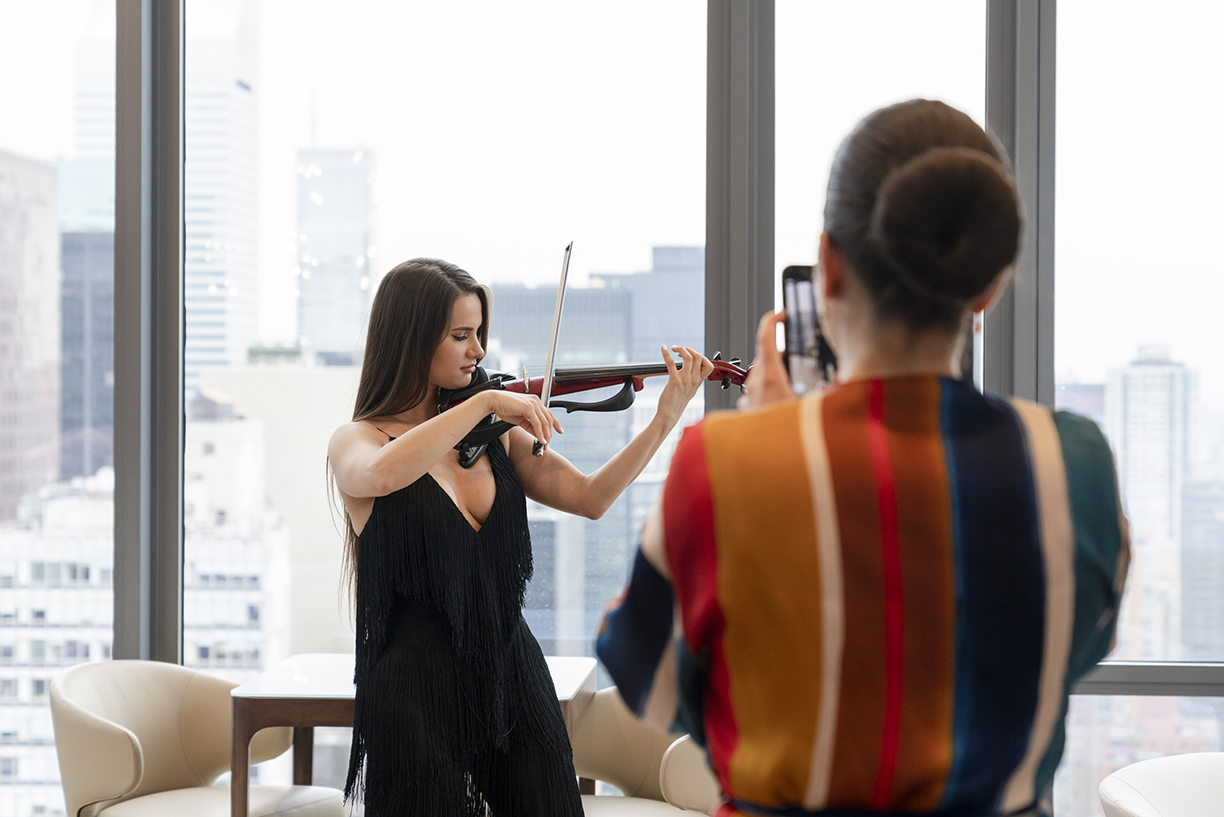


Photos courtesy of QuallsBenson
Transforming the already luxurious grand piano into a genuine work of art requires both imagination and respect for centuries-old traditions.
Few possessions are as classic and exquisite as a grand piano, an accessory that complements an elegant residence as naturally as a tuxedo suits James Bond. Even if rarely played, that timeless piece of functional art makes a profound statement about the homeowner’s style and sophistication. And like yachts or haute couture, a grand piano can be customized to indulge the most extravagant tastes.
Meticulously handcrafted in Queens, New York or Hamburg, Germany, every Steinway & Sons piano is a masterpiece. The company’s defiant adherence to Old World craftsmanship — each grand piano takes up to a year to build — is rare in an era when manufacturers are rewarded for automation, cost-control and uniformity. Even a standard-issue Steinway grand is impressive, but the company’s collaboration with renowned artists and designers elevates the product to another level altogether.
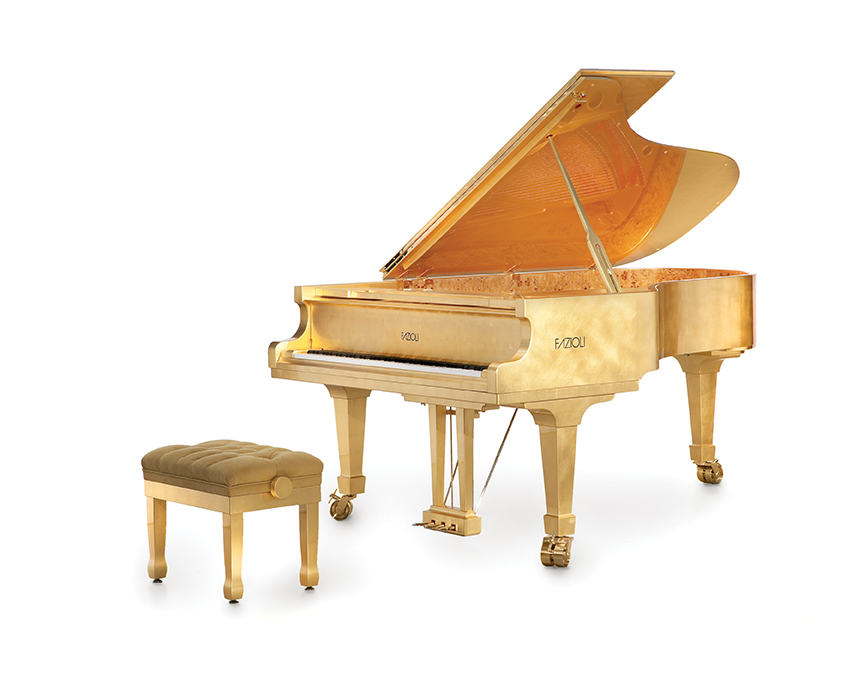
GOLD LEAF by Fazioli. 24-carat gold leaf completely covers this F228 piano model, giving it a touch of royal prestige. The transparent polyester that protects the gold leaf gives the surface a precious luminosity of iridescent shades.
Photo courtesy of Fazioli/Roberto Zava-Studio Step.
In addition to accommodating an exclusive clientele seeking something completely unique and willing to pay a premium for it, Steinway appreciates the excitement its exclusive art case pianos generate among a broader audience. “A very cool and unique limited edition that garners some press also brings attention to Steinway & Sons as a whole,” explains Director of Product Management Robert Polan, who oversees the company’s custom piano program worldwide.
“A lot of care is taken to find partners that are compatible with Steinway’s mission and principles,” says Polan, citing frequent musical associations like the “Imagine” John Lennon limited edition. “In other cases, the connection is more along the lines of a company with a similar dedication to craftsmanship and quality — a great example being what we’ve done with Lalique,” he says. Polan reports some partnerships are forged to commemorate a Steinway milestone, such as a collaboration with designer Frank Pollaro for “The Fibonacci,” which celebrated the company’s 600,000th piano in 2015, priced at $2.4 million.
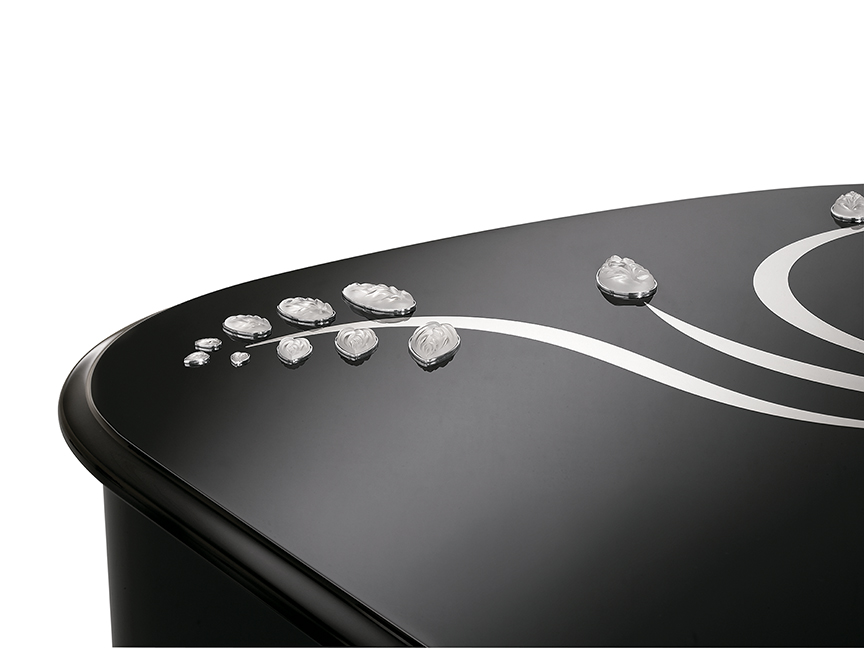
THE HELICONIA Designed by Lalique. Originally designed in 1992 by Marie-Claude Lalique — the granddaughter of René Lalique — the heliconia flower forms the perfect decor for these fine instruments. Lovingly crafted at the Lalique manufactory in Alsace, 75 crystals make the instrument shine, while silver-colored inlays are decoratively arranged into the design creating interesting reflections as well as a sense of clarity.
Photo courtesy of Steinway & Sons.
Like Steinway, Baldi Home Jewels has been creating luxury goods for more than 150 years, and the company’s use of semiprecious gems and 24-karat gold redefines home furnishings like bath fixtures or tableware. The Florence, Italy-based firm partnered with Steinway to create “Armonia Limited Edition by Baldi,” in which the cases, lids, music stands and legs of glossy ebonized pianos are embellished with Italian Renaissance ornamentation. Decorative bronze elements are hand-chiseled to perfection — an exacting process consistent with Steinway’s own commitment to craftsmanship — and plated in precious metals with a choice of nine different patinas.
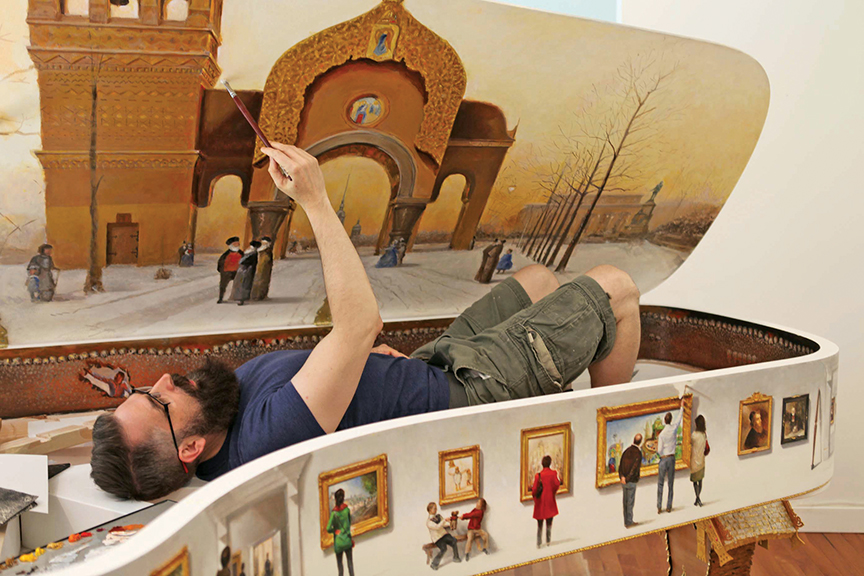
PICTURES AT AN EXHIBITION. Painted by Paul Wyse for Steinway & Sons. Photos courtesy of Steinway & Sons.
Steinway’s “Heliconia,” the product of a partnership with Lalique, is a black or white grand piano adorned with 75 jewel-like pieces of the renowned French glassmaker’s signature frosted crystal.
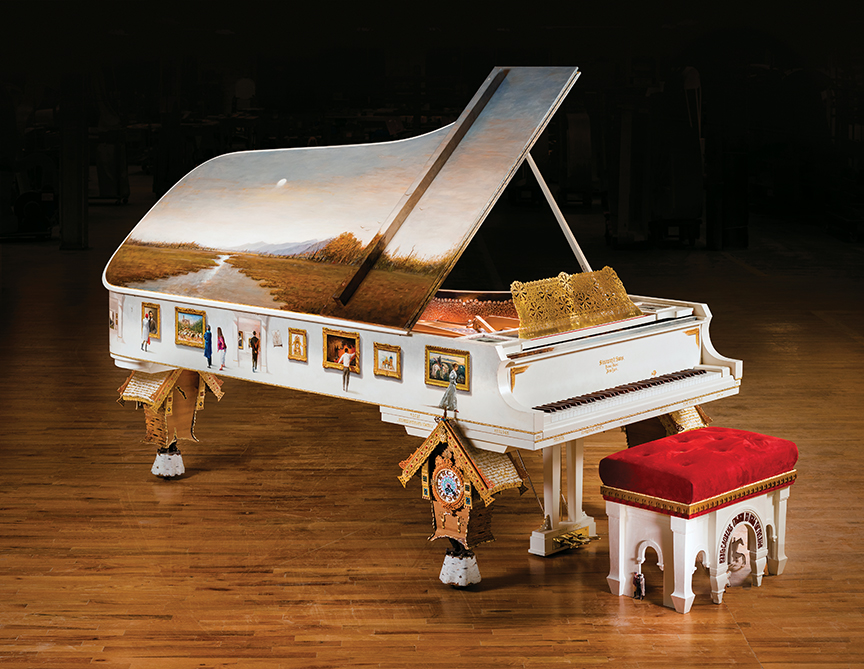
Created from a design by Marie-Claude Lalique (granddaughter of founder René Lalique), the result is a stunning, understated marriage of two great artisanal legacies. “Lalique is a company with a very similar history and tradition of craftsmanship, so as ‘kindred spirit’ companies, this partnership made sense on many levels,” says Steinway’s Polan.
Gene Korolev, who learned the art of piano refurbishment in Russia’s cultured city of Saint Petersburg, reimagines Steinway grand pianos with his daughter, Katherine Banyasz. With his 40-plus years of piano experience and her background in interior and graphic design, their Piano Solutions XXI creates glamorous, over-the-top instruments from a studio in suburban Los Angeles.
The Piano Solutions principals are quick to distance themselves from the ostentatious rhinestone-clad showpieces Liberace made famous. “I like to tell a story, not just slap some patterns onto a piano case,” explains Banyasz, who reports her father’s craftsmanship is an appealing antidote to the prevailing culture of mass production. An early work paid tribute to French fashion designer Coco Chanel, an Art Deco design in which nearly 50,000 cubic zirconia crystals tell Madame Chanel’s story, with her silhouette appearing inside the lid.
When the Chanel piano sold for $250,000, the father-and-daughter entrepreneurs recognized the demand for elaborate, finely-crafted art case pianos. “Anybody who appreciates art, wants something unique to pass from generation to generation, or who finds meaning in the themes,” is how Banyasz characterizes the company’s exclusive clientele.
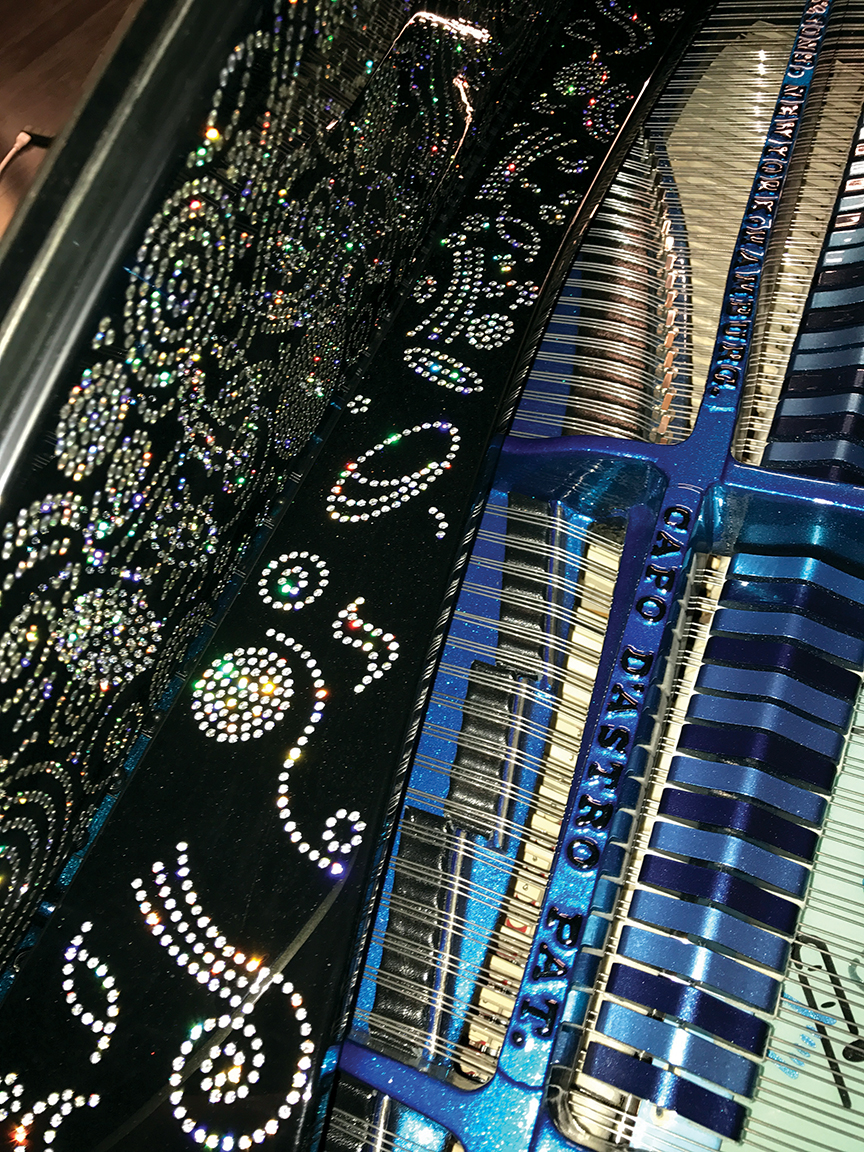
NEW YORK SERENADE by PIANO SOLUTIONS XXI. Photos courtesy of Piano Solutions XXI.
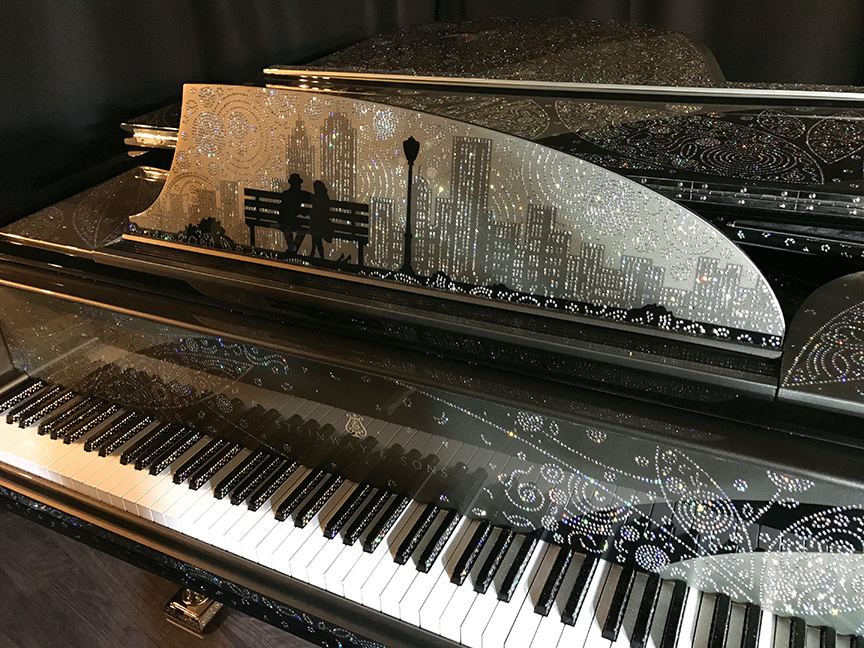
Piano Solutions XXI’s “New York Serenade” is a Steinway grand enveloped with images of Manhattan landmarks created through the application of about 165,000 cubic zirconia crystals. Its music rack features a couple seated on a park bench viewing the skyline and the entire composition represents a love letter to the Big Apple. A total of 2,880 crystals were affixed to the sides of the piano’s 36 black keys, which Korolev remembers consuming many of the 3,000 hours of labor invested in this project. New York Serenade is on the market for $1.5 million and Banyasz believes a luxury Manhattan hotel would be a natural buyer.
Fazioli was founded in Italy 130 years after Steinway but produces among the most coveted instruments in the world, and serious musicians dominate its clientele. Only about 100 are handcrafted annually at its factory near Venice, and admirers suggest playing a Fazioli is the musical equivalent of racing a Ferrari. Founder Paolo Fazioli insists that the drive to explore new techniques and aesthetics is embedded in his company’s DNA. “This is our life, experiments. You can increase quality and do a good job, but only if you continually experiment,” he says.

THE HELICONIA Designed by Lalique
Photo courtesy of Steinway & Sons.
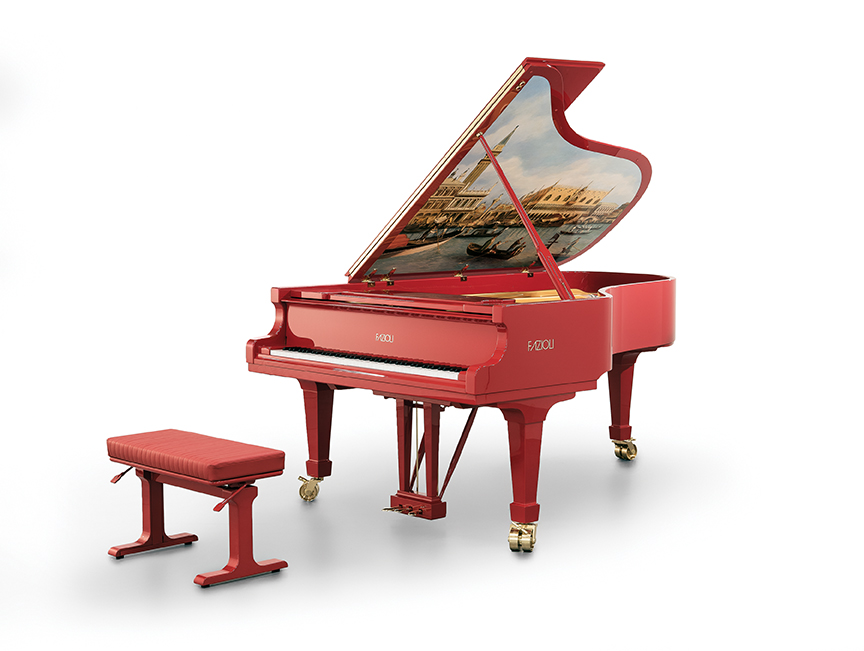
MARCO POLO By Fazioli
Photo courtesy of Fazioli/Roberto Zava-Studio Step.
Among Fazioli’s experimental art case models is a grand piano entirely clad in 24-karat gold leaf, the ethereal “Butterfly” designed by architect Bing Thom, and the high-gloss red “Marco Polo,” originally commissioned by a client from China. The crimson instrument’s inside lid features a reproduction of an ornate Canaletto painting that celebrates the ancient connection between Venice and China
Showstopping Pianos
Fazioli: www.fazioli.com
Piano Solutions XXI: www.pianosxxi.com
Steinway & Sons: www.steinway.com
Collaborators
Baldi Home Jewels: www.baldihomejewels.com
Lalique: www.lalique.com
The word jewelry brings to mind beautiful, valuable accessories that elevate the wearer to a status reserved for those fortunate enough to afford these precious embellishments. As jewelry owners begin to amass a collection of fine adornments, there becomes a need for a place to keep their valuables organized and protected from potential damage.
There are several luxurious options for a refined gem collector. These opulent jewelry boxes, which retail for more than $3,000, prove that high-end jewelry is deserving of a home that matches its elegance.
Jewelry Box In Royal Ebony Macassar
$4,623.15
Only a limited quantity of these boxes have been manufactured with rare wood that features a never-before-seen grain pattern. This product is designed to serve as two jewelry boxes in one, as its lower tier is easily removable for travel purposes. Two keys adorned with tassels unlock a top tray with an internal mirror, making this jewelry box an elegant gift that doubles as a means of both storing and displaying the owner’s jewelry collection.


Russian Karelian Birch Jewelry Box
$3,434.34
Handmade from a Russian royal wood that was previously used exclusively to make furniture for Russian tzars, this jewelry box’s modern aesthetic is enhanced by the rich nature of Karelian Birch. It also features a two-in-one design with a removable tier, and is lined with cream suede complimented by nickel-plated hinges.
Japanese Tamo Ash Exclusive Creations Jewelry Box
$4,623.15
Japanese Tamo Ash wood is one of the most rare and luxurious woods in the world — known for its unique and eye-catching grain pattern, the wood used to be used to decorate only the finest Samurai swords on the island of Hokkaido. Now, it is used in luxury items including the dashboard of Bentley cars, and this stylish, versatile jewelry box.

Photos courtesy of iWOODDESIGN.
Therapeutic horseback riding is changing the lives of physically and developmentally disabled children and veterans.
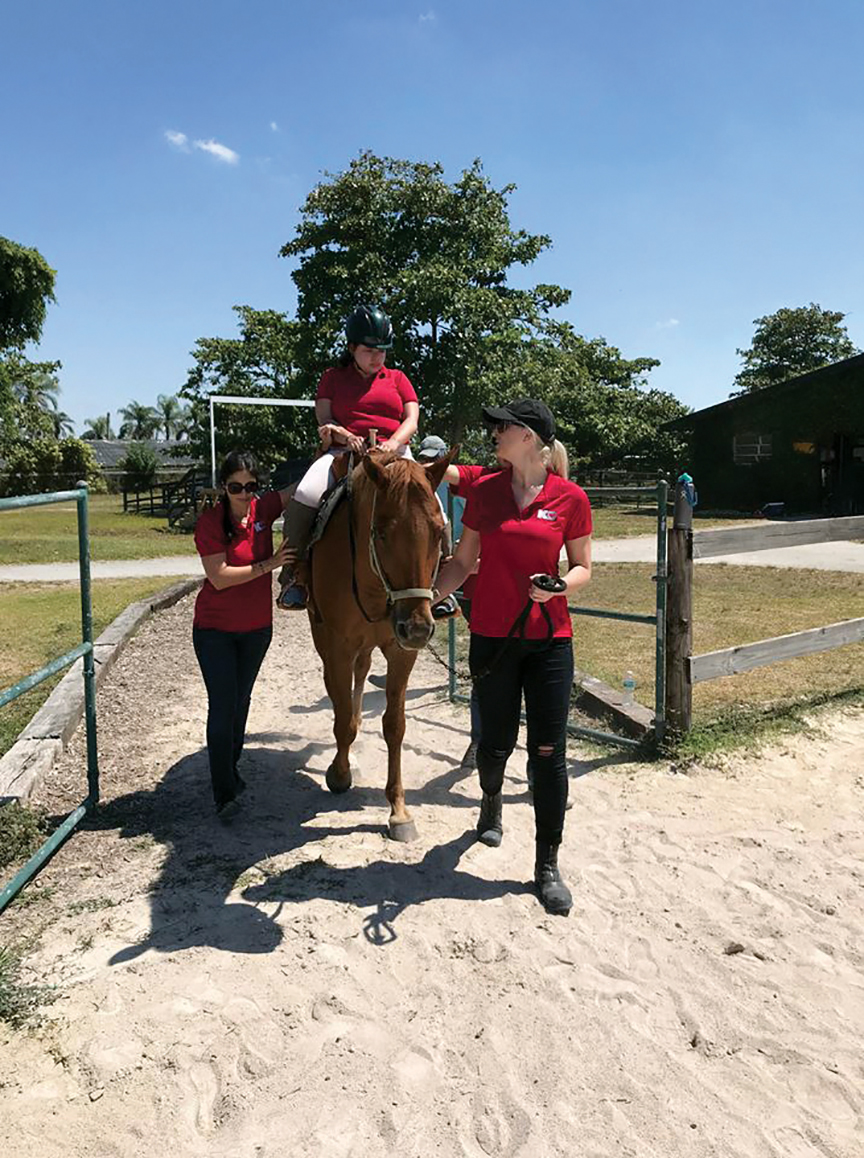
Appreciating the profound relationship between horse and rider, Sissy DeMaria-Koehne founded Give Back for Special Equestrians in 2013 along with Dr. Heather Kuhl and Isabel Ernst. The organization raises money to provide therapeutic horseback riding scholarships for children and veterans suffering from physical or developmental disabilities — whether it be autism, cerebral palsy or post-traumatic stress disorder (PTSD) — so they can enjoy the benefits of horsepower that heals.
“I was approaching a milestone birthday, and even though I raised three wonderful daughters, I was thinking about how else I might want to be remembered,” says DeMaria-Koehne, president of Kreps DeMaria Public Relations in New York and Miami. “I’m proud to be a good mother and grateful to have enjoyed success in business, but I believe we’re called upon to do more to pay forward our blessings.” When DeMaria-Koehne, whose love of horses began at an early age, saw how individuals with physical or developmental disabilities responded to therapeutic riding, she knew she wanted to play a role.
DeMaria-Koehne, who reports equestrian therapy dates back to the ancient Greeks, originally named the organization “Give a Buck for Special Equestrians,” because her initial fundraising effort encouraged equestrians to give as little as a dollar every time they paid their boarding fees.
Give Back for Special Equestrians currently provides funding for therapeutic facilities including Good Hope Equestrian Center, Stable Place and Special Equestrians of the Treasure Coast in Florida, and Gallop NYC in Queens. DeMaria-Koehne hopes to eventually expand her organization nationally.
These remarkable facilities offer extraordinary services for special needs equestrians, but often do not have the resources for effective fundraising. DeMaria-Koehne’s organization holds regular galas in the Hamptons, as well as at the Winter Equestrian Festival outside Palm Beach, Florida each year. With influential board members like Georgina Bloomberg (world-class equestrian and daughter of former New York Mayor Michael Bloomberg), the organization continues to grow and attract high profile sponsors like Rolls-Royce.

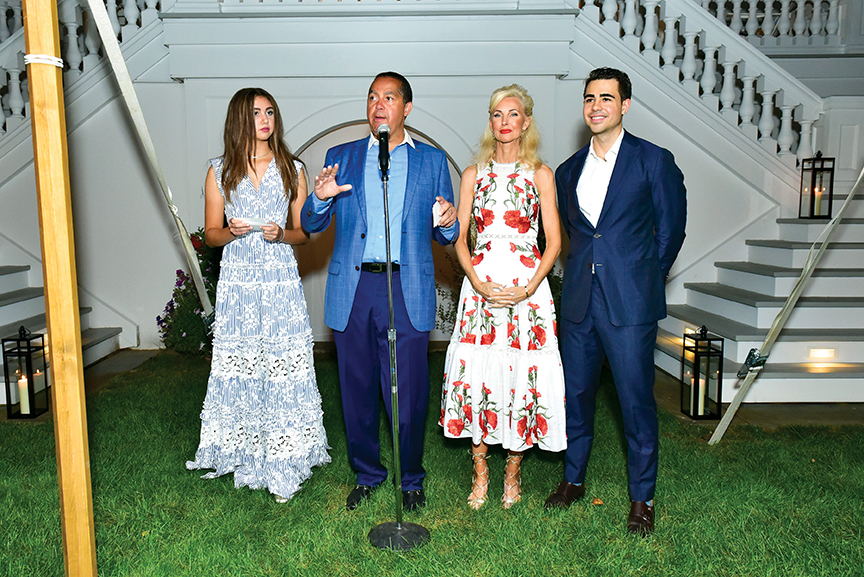
Last summer, prominent real estate developer Don Peebles hosted a fundraiser at his Bridgehampton, New York estate that raised $50,000 for Give Back for Special Equestrians. Inspired by his daughter Chloe’s love of horses, Peebles reports, “She helped us learn about the compassion, strength and courage of horses and how horses having these qualities can heal humans and bring joy to their lives.” He adds, “Hosting a fundraiser for an effort with such beneficial outcomes is very rewarding!” According to DeMaria-Koehne, everybody in the organization, from graphic artist to accountant, is a volunteer. “Nobody takes a salary, and, beyond minor operating costs, all funds raised go right back to serve these special needs riders,” she says.
Some riders are children who are totally non-verbal, explains DeMaria-Koehne, but recounts moments shared by Dr. Peggy Bass, executive director at Good Hope Equestrian Training Facility, who has seen the miracles of this therapy at work when young riders, previously non-verbal saying the words “giddy up” to their mounts. She further reports, “After spending their life in a wheelchair, when they get onto a horse they feel like they’re on top of the world. They’re literally walking and standing tall!” Horses selected for special needs riders are quiet, docile and patient, and tend to be older. “People with autism are often non-verbal, but so are animals, who communicate through their energy,” explains DeMaria-Koehne.
“I still get excited about helping our clients succeed,” states DeMaria-Koehne about her highly successful career as a public relations executive, but says of her nonprofit work, “This is different … this speaks to my soul.”
Photos courtesy of Give Back for Special Equestrians.

This story was previously featured in the Winter 2019 edition of Unique Homes Magazine.


